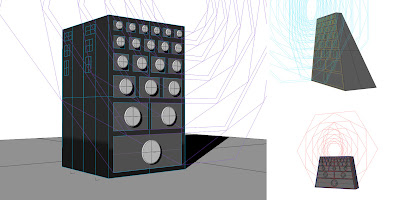
Chest of drawers, cabinets and bookshelves are suitable design opportunities for a topic dealing with atheism. The atheist worldview is very much concentrated on the accumulation of information and knowledge in order to ascertain the truth. The categorization inherent in the drawer/filing/shelving system is an analogy for this. And in this sense too, cabinets and drawers relate to the medieval “wunder cabinets”, or Cabinets of Curiosities, that predate modern museums and which were important to the development of both scientific reasoning and secularism in the Enlightenment period in Europe.
With these designs, I am attempting to embed qualities that appeal to rationalists, such as the mathematically proportioned drawers, as well as those with an atheist perception of life as framed by the a vacuum of life before birth and after life. This last quality is manifested by the deep and reflective black, and highlighted internal color for the drawers.
Additionally, I am trying to create a sense of subtle conflict in the design – as a metaphor for secular/religious conflict perhaps, but especially in a contrast of the rational and the irrational, as a path to a sense of the sublime, as defined by Jean Francois Lyotard:
Lyotard defined sublime as pleasurable anxiety and spoke about the “dynamical sublime”, when our minds recoil at an object we feel is immensely more powerful than ourselves, something that could crush us with its weight, force or energy. This unique aesthetic occurs when we realise that while our bodies may be dwarfed by such power, our reason need not be; we can control our fear by reasoned contemplation. The sublime is both pleasurable and painful.
This is most evident in the sloping backs – that rationally indicate the reducing drawer sizes, but irrationally create a void behind the object – inhibiting the object from being placed up against a wall, and suggesting a placement inside the room, creating a greater and more dominant presence.

